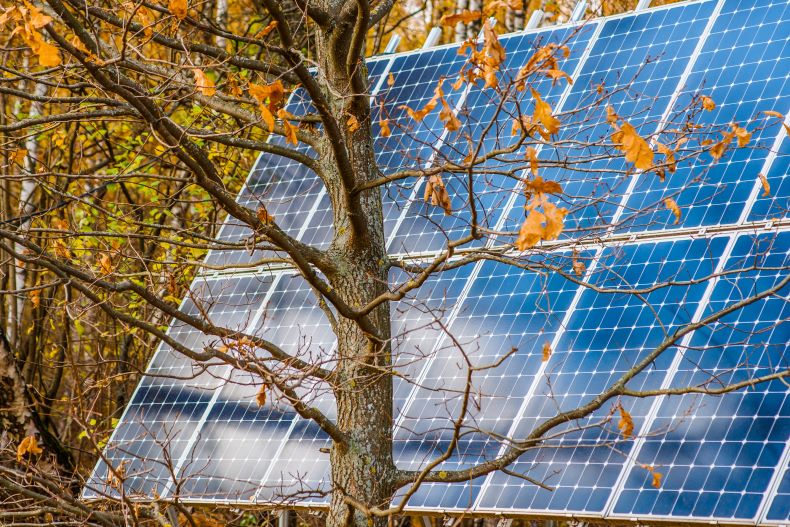Last update May 28th, 2024 at 10:47 am
Although Australia is known to have a sunny climate most of the year, there may also be cloudy and snowy days – especially during the winter. So, how will the Australian winter affect the electricity output from your solar system?
In this article, you will find the answer.

Firstly: How does a solar panel work?
To be able to understand how winter may affect your solar panels, you also need to know the basics of how a solar panel works. Without going into detail, your solar panel will produce electricity when photons emitted from the sun hit its surface.
During the night there is no sun, and the solar panels will stop generating electricity. If you have a battery connected to the solar system, you might store energy during the day and use it at night. Alternatively, you can use energy from the grid (if you have a grid-connected system).
Solar panels do work in winter
Depending on where in Australia your home is located, the winter may lead to more rainy, snowy or cloudy days.
Luckily, solar panels are able to generate electricity by absorbing light from the visible spectrum. In other words, as long as there is daylight, your solar system should be able to produce energy – even if it’s rainy, snowy or cloudy outside.
That being said, the system will produce more energy when it is hit by direct sunlight. During winter the sun is also lower above the horizon, which may affect the efficiency of solar energy production. With fewer sunlight hours in winter, your solar system won’t have the usual production rate.
What about winter temperatures?
During winter it will not only be less sunny in many parts of Australia, but the temperatures may also drop significantly. However, solar energy production is dependent on sunlight, and not heat – which is important to know.
Your solar panel system may work less efficiently during heat. In some areas of Australia solar panels may even work better in the winter months. However, the energy output may be reduced if it is very cold (but it will not disappear).

When is the solar output at its lowest?
Solar energy-wise, the worst month for solar energy production in Australia is in June. In June there is the winter solstice, which marks the shortest day of the year. When it comes to the temperature, it will be at its coldest in July.
Solar panels work well during the winter – especially in Darwin
With its 7,688,000 square kilometres, Australia is the sixth largest country in the world. Because of this, it may not be surprising that the climate may differ from area to area. This also means that the solar efficiency may differ from one place to another.
Darwin is known to be one of the best places for solar energy production during winter, thanks to the stable day length and tropical climate. The summers are often wet and rainy, while the winter months are clearer and sunnier.
If you are located in Darwin, you may expect a higher solar energy output during the winter months. However, in most areas of Australia solar production will be somewhat lower in the winter.
The further south you live, the less efficient the solar panel will produce energy during the winter months. Here is the expected solar output in different Australian cities, shown as a percentage of the annual daily average:
- Darwin: 112%
- Brisbane: 75%
- Sydney: 71%
- Perth: 66%
- Canberra: 60%
- Adelaide: 57%
- Melbourne: 57%
- Hobart: 49%
How to ensure a greater solar output during winter?
If you want a solar panel system that produces a sufficient amount of electricity in winter, you should consider installing a larger solar system. The larger the solar system, the more energy it will be able to produce.
For instance, if you replace a 6.6 kW system with a 10 kW system, you may expect it to produce as much as 50% more energy. In addition to this, it might be a good idea to increase the tilt of your solar panels in winter, as the angle of the sun is lower.
In most cases, a north-facing solar panel is ideal for Australian homes. The panels should be tilted the following way in different Australian cities:
- Darwin: 46 °
- Brisbane: 53 °
- Sydney: 60 °
- Perth: 58 °
- Canberra: 59 °
- Adelaide: 58 °
- Melbourne: 62 °
- Hobart: 67 °
Besides having an effective solar panel system, it is important to ensure that the rest of your home is as energy-effective as possible. It may be a good idea to improve insulation, gaps and glazing, and to combine the solar panels with heat pumps or similar.
To conclude, solar energy will in most cases work great in the Australian winter. Find a solar installer today, and look forward to solar benefits all year around!